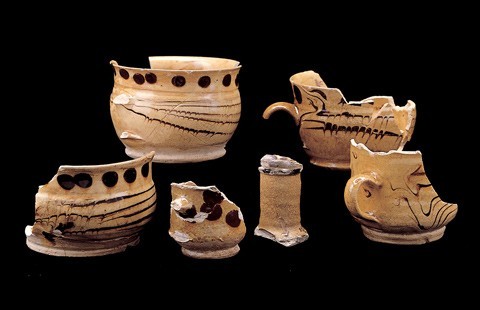
A group of hollow ware vessels, Staffordshire, 1720–1740. Slipware. (All objects courtesy, State Museum of Pennsylvania; photos, Gavin Ashworth.) A grouping of some of the ceramics recovered from the Market Street excavations. The candlestick fragment in the center is the only object not recovered from the well.
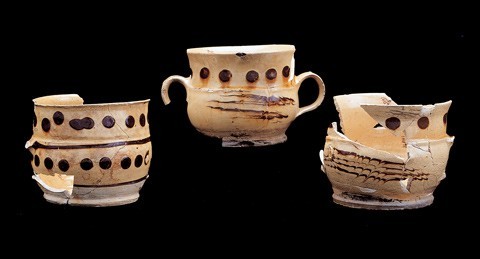
Double and single-handled cups, Staffordshire, 1720–1740. Slipware. These large drinking vessels were recovered from the Market Street well.
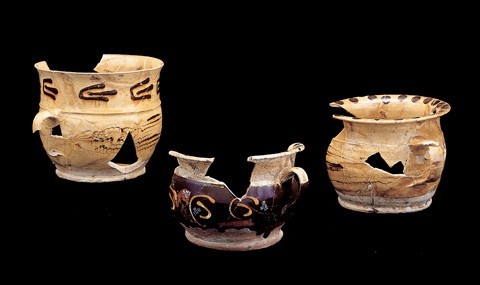
Two chamber pots, center and right, and a posset pot, left, Staffordshire, 1720–1740. Slipware. Posset pot H. 5 3/4".
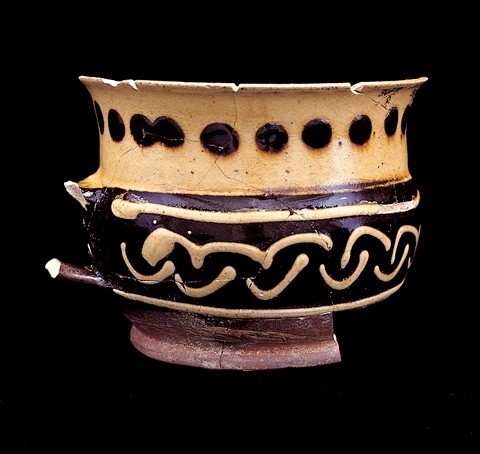
Large cup, Staffordshire, 1720–1740. Slipware. H. 4". A striking slipware cup decorated on the exterior with brown slip below the rim, and in reverse on the bowl.

Dishes, Samuel Malkin, Burslem, Staffordshire, 1720–1740. Slipware. D. 6". These molded dishes are simply embellished with brown slip dots. They are sooted on the exterior, indicating they were used as cookware.
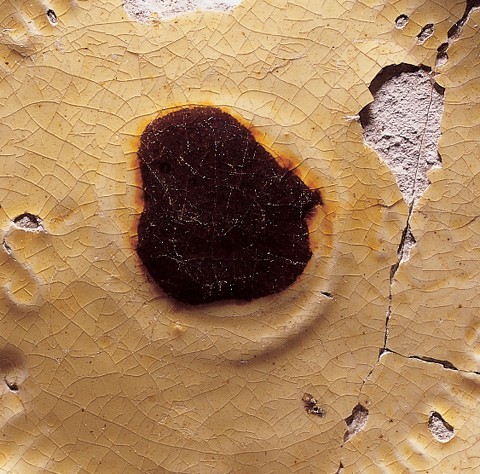
Detail of “S M” initials from a dish illustrated in fig. 5.
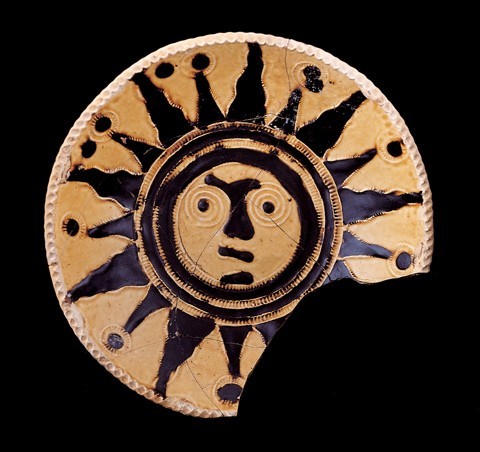
Sunface dish, probably Samuel Malkin, Burslem, Staffordshire, 1720–1740. Slipware. D. 11 1/8". The sooted exterior of this dish evidences its use in the oven
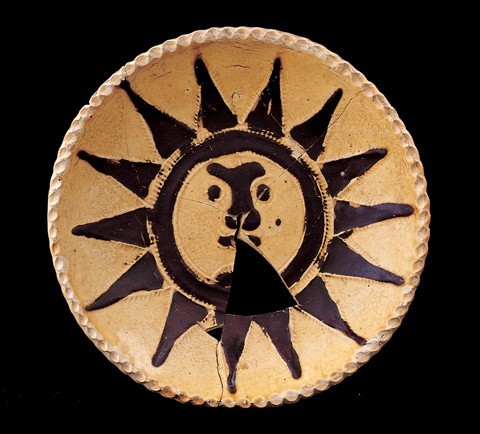
Sunface dish, probably Samuel Malkin, Burslem, Staffordshire, 1720–1740. Slipware. D. 7 1/2". This dish displays no evidence of oven use.

Fragments of other sunface dishes. Probably Burslem, Staffordshire, ca. 1720–1740. Slipware. These fragments, also from the Market Street well, are from sunface dishes most likely made by Samuel Malkin.
